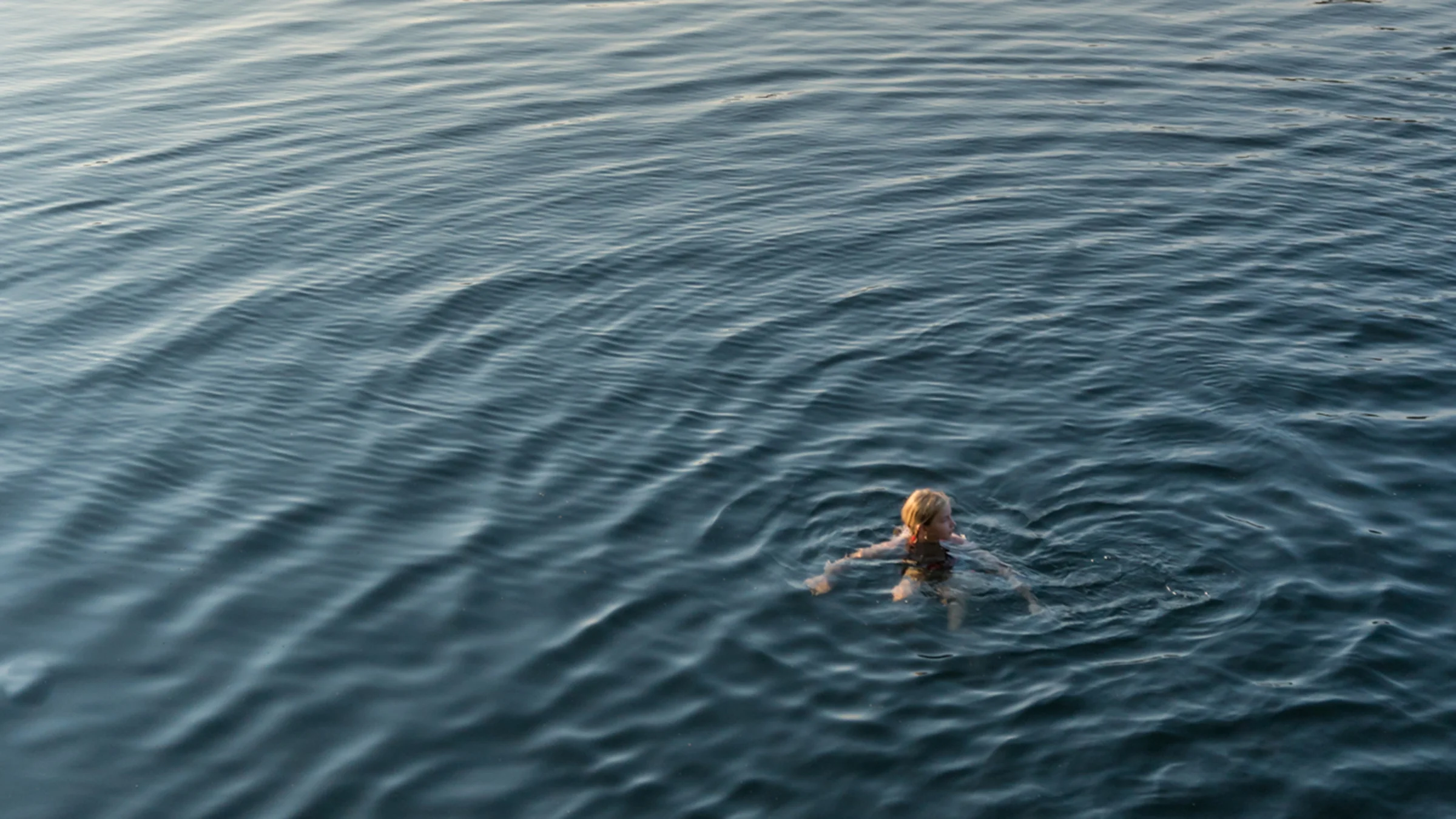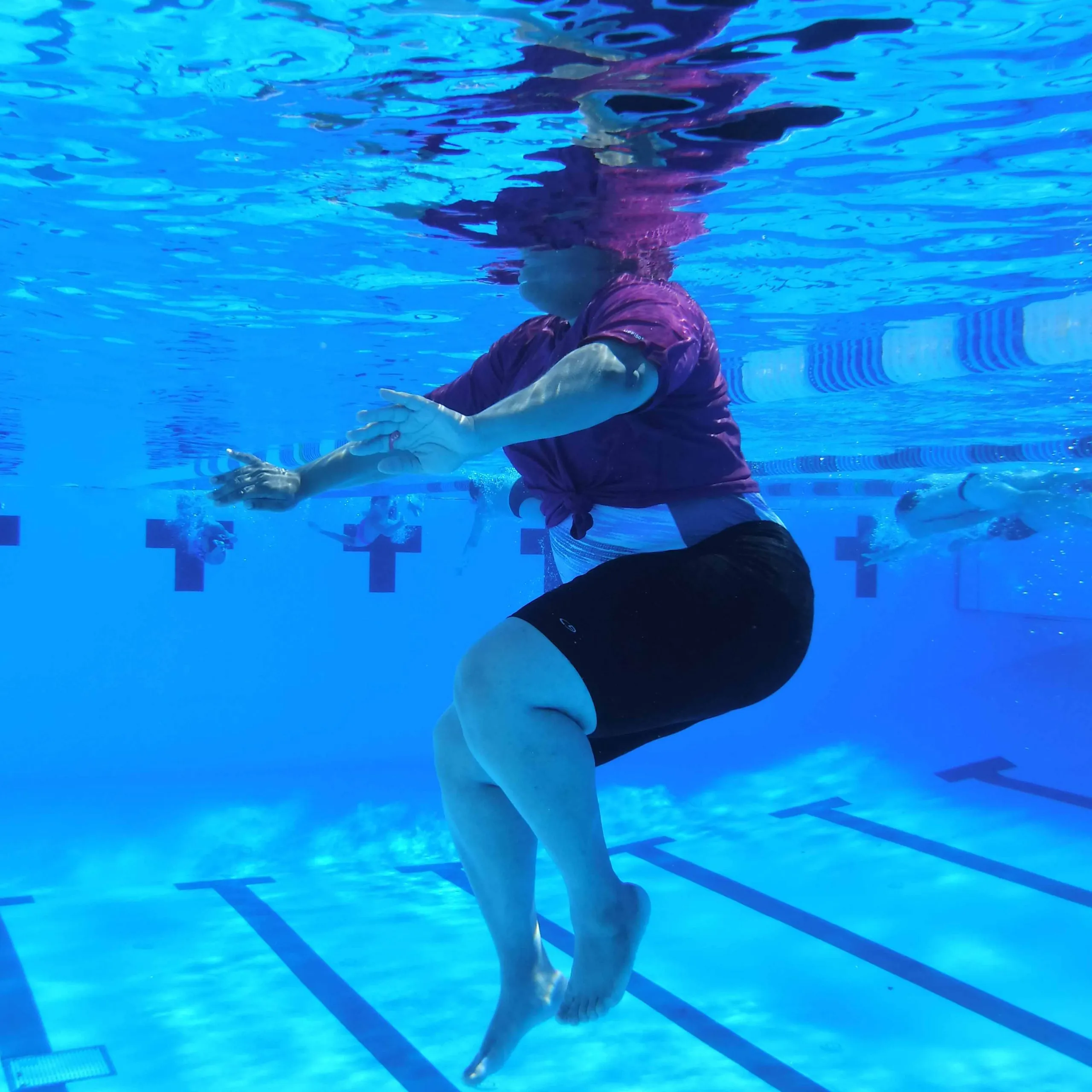Treading water might seem like a simple skill but don’t underestimate its power. This deceptively basic exercise is a hidden gem in the fitness world, offering a plethora of benefits for your physical and mental well-being. While it might look effortless from a distance, the constant movement and water resistance engage a surprising number of muscle groups, making it a surprisingly effective full-body workout.
So, whether you’re a seasoned swimmer looking to add variety to your routine or a newbie seeking a low-impact exercise, treading water is worth exploring. Here we find out “Is treading water a good exercise” and unlock its potential to transform your body and mind.
Contents
Is Treading Water Good Exercise?

Yes. Treading water might seem like a simple skill, but it hides a wealth of benefits for your physical and mental well-being. This deceptively basic exercise engages a surprising number of muscle groups, making it a surprisingly effective full-body workout.
Here’s why treading water deserves a place in your fitness routine:
Full-Body Workout:
- Engages Major Muscle Groups: Unlike isolated exercises that target specific muscles, treading water engages your legs, core, arms, and shoulders simultaneously. This provides a well-rounded workout that strengthens and tones your entire body.
- Cardiovascular Benefits: The constant movement and water resistance work your heart and lungs, improving cardiovascular health and increasing endurance.
- Low-Impact: Unlike high-impact exercises that can be jarring on your joints, treading water is gentle and safe for people of all ages and fitness levels.
What Are the Benefits of Treading Water?
Here are some of the key benefits of treading water:
- Improved Coordination: Treading water requires continuous and simultaneous movement of your arms and legs. This interaction trains your brain to coordinate the movements effectively, improving your overall coordination.
- Increased Muscle Strength: Working against the resistance of the water while treading helps strengthen your muscles. It engages various muscle groups, including your arms, legs, core, lower back, abdominals, and hip flexors. The more you practice, the stronger your muscles become.
- Essential for Learning to Swim: Treading water is a fundamental swimming technique that every beginner swimmer should master. It helps you gain confidence in the water and progress to more advanced swimming techniques.
- Enhanced Endurance: Treading water is a moderately intense activity that you can sustain for an extended period. This builds your stamina and endurance, allowing you to engage in other physical activities for longer durations.
- Calorie Burning: According to the American College of Sports Medicine, treading water is an effective way to burn calories and manage weight. The actual rate of calorie burn may vary from person to person, but treading water at a moderate pace can burn approximately 3.5 to 7 calories per minute, while a vigorous pace can burn more than 7 calories per minute.
- Low-Impact Exercise: One of the significant advantages of treading water is its low-impact nature. It provides a full-body workout without putting excessive stress on your joints. If you have painful or stiff joints, treading water can be an ideal way to achieve a comprehensive workout without exacerbating your condition.
What Muscles Does Treading Work?

When it comes to treading water, it’s not just a great cardiovascular exercise but also a full-body workout. It engages multiple muscles throughout your body, helping you to build strength, endurance, and coordination.
Here are the key muscle groups that treading water targets:
1. Upper body muscles: Treading water primarily works your upper body, including your shoulders, arms, and chest. As you move your arms continuously to stay afloat, you’ll be engaging your deltoids, triceps, and pectoral muscles. This constant motion against the resistance of the water helps to build strength and tone these muscle groups.
2. Core muscles: Treading water is excellent for strengthening your core muscles, which include your abdominal and back muscles. The constant movement and effort required to maintain an upright position engage your core muscles, helping to improve stability and posture.
3. Leg muscles: Treading water also engages your lower body, specifically your quadriceps, hamstrings, and calf muscles. The constant kicking motion required to stay afloat puts these muscles to work, helping to build strength and endurance.
4. Hip muscles: The movement of scissor kicks used in treading water targets your hip flexors and abductors. These muscles play a crucial role in stabilizing your hip joints and supporting overall lower body movement.
5. Back muscles: Treading water involves constant movements of your back muscles, including your lats. Keeping your back straight and aligned while treading helps to strengthen these muscles and improve overall posture.
How Many Calories Does Treading Water Burn?
Treading water is not only a great cardiovascular exercise but also an effective calorie burner. When it comes to burning calories, treading water can be quite advantageous. The number of calories burned during a treading water workout depends on various factors such as weight, fitness level, duration, and intensity of the workout.
On average, treading water burns approximately 300 to 450 calories in just 30 minutes. This calorie burn can be even higher if you tread water vigorously or incorporate intervals of hard treading into your workout routine. In fact, by treading as hard as possible in the deep water for 30 seconds, then floating on your back for 30 seconds, and repeating this process for 30 sets, you can burn nearly 300 calories. Isn’t that amazing?
Frequently Asked Questions:
Is treading water as effective as swimming?
While treading water is good exercise, adding swimming to your routine can increase your calorie burn and improve cardiovascular and joint health.
What is the fastest way to lose weight in the pool?
The butterfly stroke is the most calorie-burning stroke, followed by breaststroke and backstroke. Varying the intensity of your workout also yields good results.
Does treading water burn belly fat?
Treading water burns 600 to 888 calories per hour, helping to create an energy deficit and reduce overall body fat, including belly fat.

Hello, I’m Ravindra. Over the years, I’ve immersed myself deeply into the world of fitness and health, transforming both my body and mind. Writing has allowed me to share my journey, insights, and expertise with those just starting out and seasoned fitness enthusiasts alike. Beyond just routines and diets, I believe in inspiring others to adopt a holistic approach to well-being.
